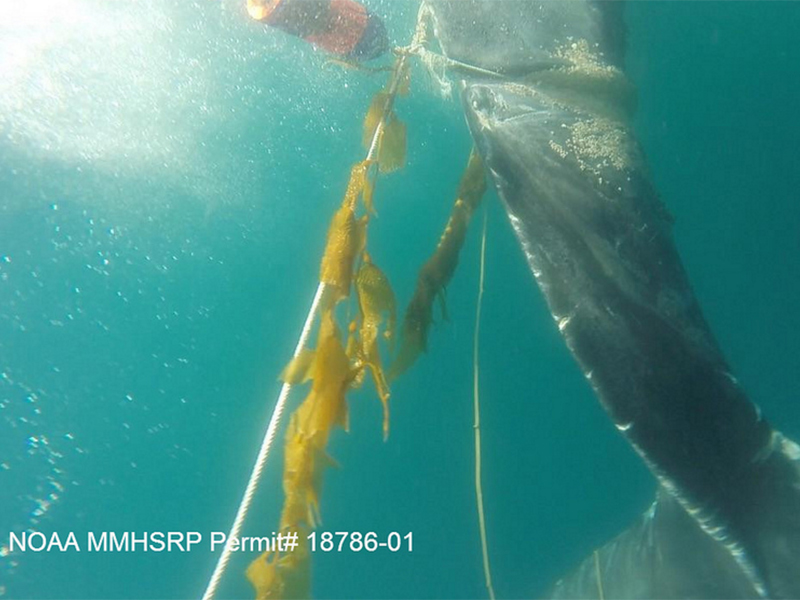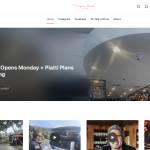Many people know about our Pacific Marine Mammal Center (PMMC), our homegrown Laguna Canyon hospital for seals and sea lions. This year, the team at PMMC has rescued 111 sea lions, 53 elephant seals, four harbor seals, two Guadalupe fur seals, a dolphin and a turtle.
But few people know that the PMMC personnel regularly go out on calls to free entangled marine mammals such as giant humpbacks, California Grays and more. This week, the team was in the thick of it, working on freeing an entangled humpback that many had seen and tracked from farther north. The operation was successful! Here’s the press release about the adventure.
If you see a sick seal, sea lion or entangled marine mammal, please understand that it can be dangerous to approach. Professionally trained people are readily available by calling the PMMC hotline at (949) 494-3050 or, to report entangled whales to a direct line, SOS-WHALE hotline, (1-877-767-9425).
PRESS:
A juvenile humpback whale about 25 feet long and entangled in lines from what is believed to be Dungeness crab gear from Washington was cut free on Sunday off southern California by responders from Marine Animal Rescue, Pacific Marine Mammal Center, Sea World Rescue, NOAA Fisheries and community members.
Community members in Palos Verdes, California, first reported their observations of the entangled whale to the NOAA Fisheries West Coast Marine Mammal Stranding Network on Saturday morning at approximately 9:00 a.m.
Marine Animal Rescue (MAR), Baywatch Cabrillo and Redondo Beach Harbor Patrol responded and attached a telemetry buoy to the whale that included a satellite tag to track the animal’s movements. After attaching the telemetry buoy the MAR team documented the entanglement and helped coordinate a plan of action for Sunday.
On Sunday, teams from Marine Animal Rescue left Dana Point Harbor while Pacific Marine Mammal Center and Sea World Rescue departed from Oceanside Harbor. At approximately 10:30 a.m. the teams located the whale four miles offshore of the San Onofre power plant.
As part of the response, four large orange “poly balls,” or floats, were attached to the trailing line of the whale to slow its movements and keep it at the surface with the telemetry buoy.
Once the whale slowed, the team cut the line using a special “flying” knife. The knife is attached to a pole, with a line back to the rescue boat. Once the knife was in position, responders removed the pole and the drag of the boat on the line connected to the knife cut through the entanglement. All the line wrapped around the whale’s body then fell off to the right side and trailed out the right side of the whale’s mouth.
About 1:30 p.m., responders made a final cut to remove the trailing line from the whale, leaving only one strand of white line running from the whale’s mouth to the leading edge of its tail flukes. Unfortunately mouth entanglements are very difficult to remove, so the line was cut as short as possible with the expectation that the whale will shake the remnant line on its own.
At about 4:00 p.m. Sunday afternoon, reports of a second entangled whale off Dana Point came in from Captain Dave’s Dolphin Safari, and then again from Dana Wharf Sportfishing. After reviewing the photos responders determined that this was the same whale the response team had just freed. Photographs remain to be analyzed to determine if any line remains in the wound.
NOAA Fisheries would like to thank Baywatch Cabrillo, Marine Animal Rescue, Pacific Marine Mammal Center, Redondo Beach Harbor Patrol, Sea World Rescue, NOAA Fisheries staff, and community members who helped with boats and communications.
Only highly trained personnel permitted under NOAA Fisheries’ Marine Mammal Health and Stranding Response Program (Permit # 18786-01) conduct whale rescues and disentanglements. The public can help by reporting entangled whales to the SOS-WHALe hotline (1-877-767-9425), and reporting entangled or stranded dolphins, seals, sea lions, or sea turtles to the local stranding network or NOAA Fisheries’ stranding hotline at 1-866-767-6114. For more information see our webpage at West Coast Marine Mammal Stranding Network


